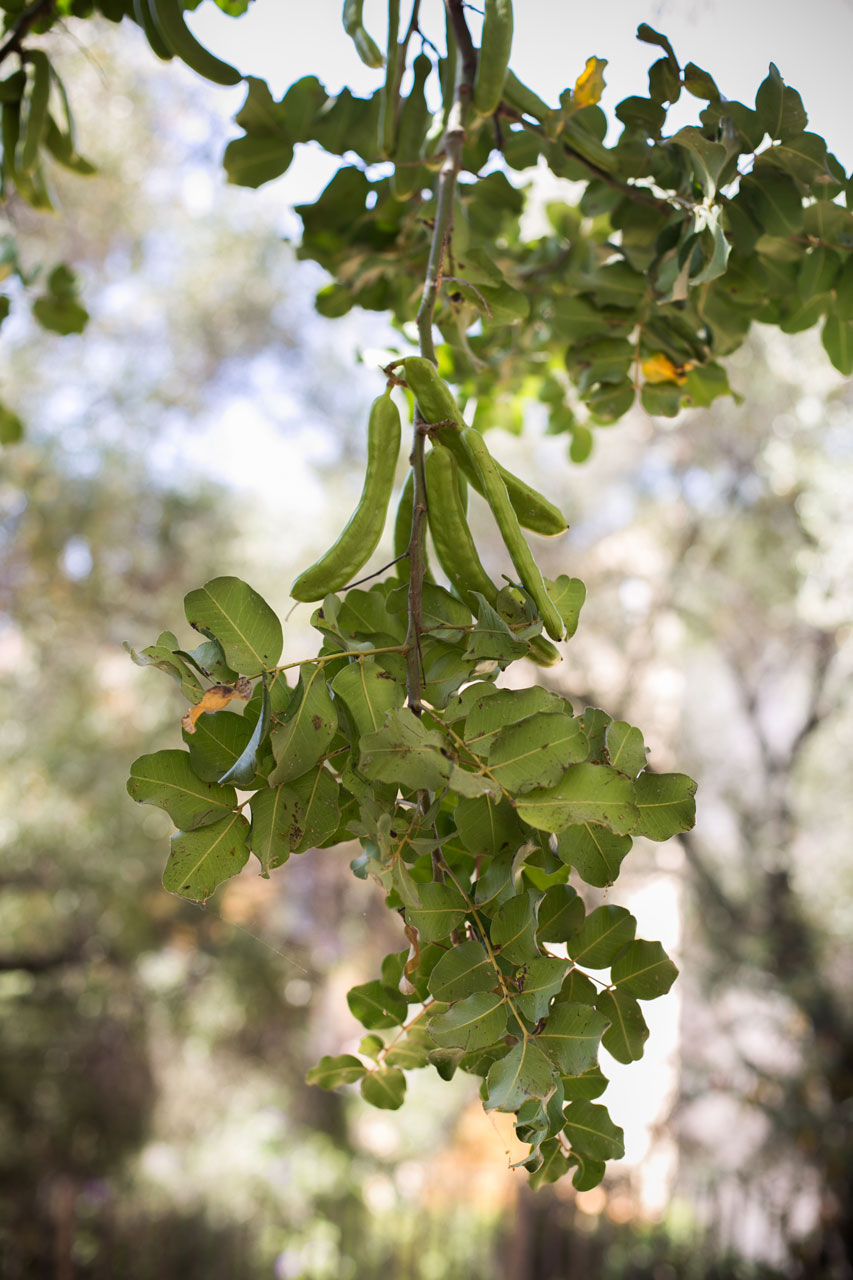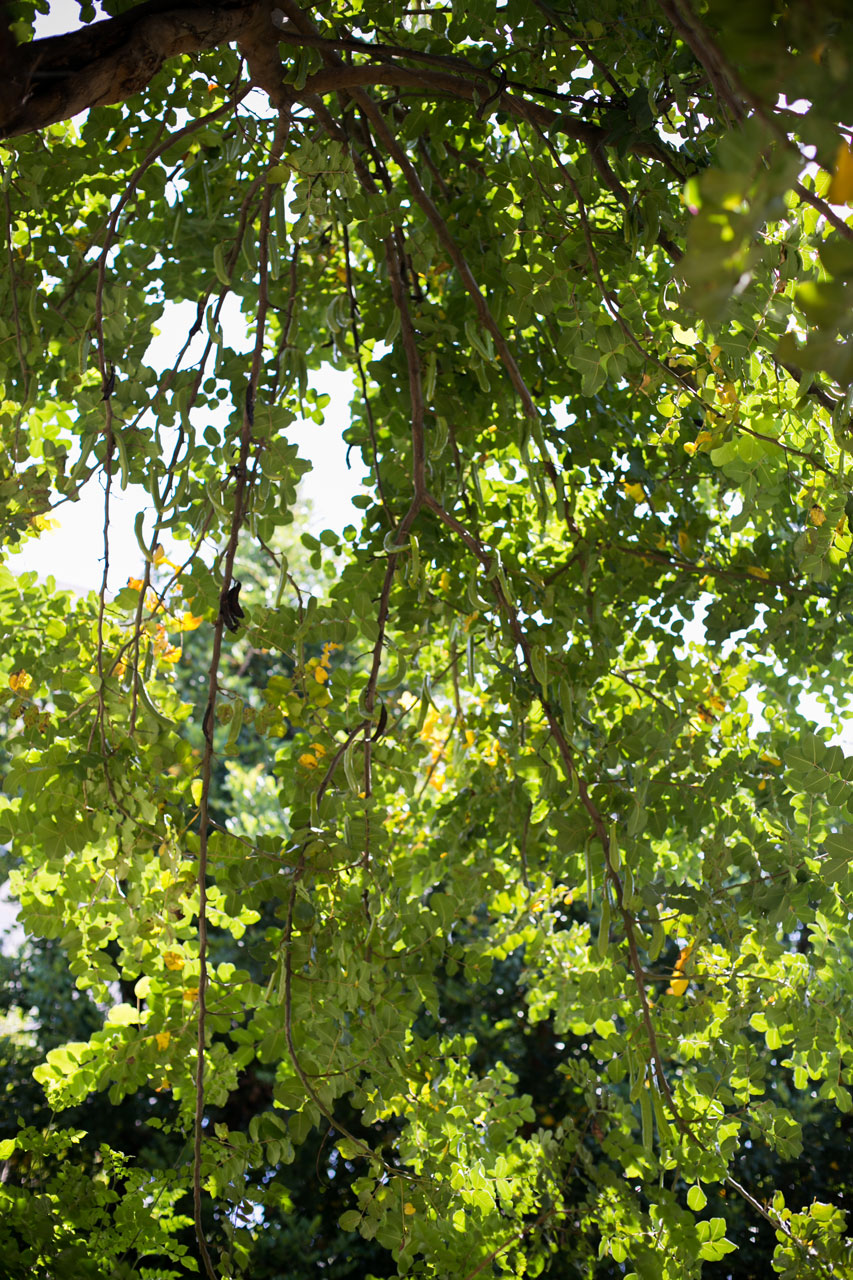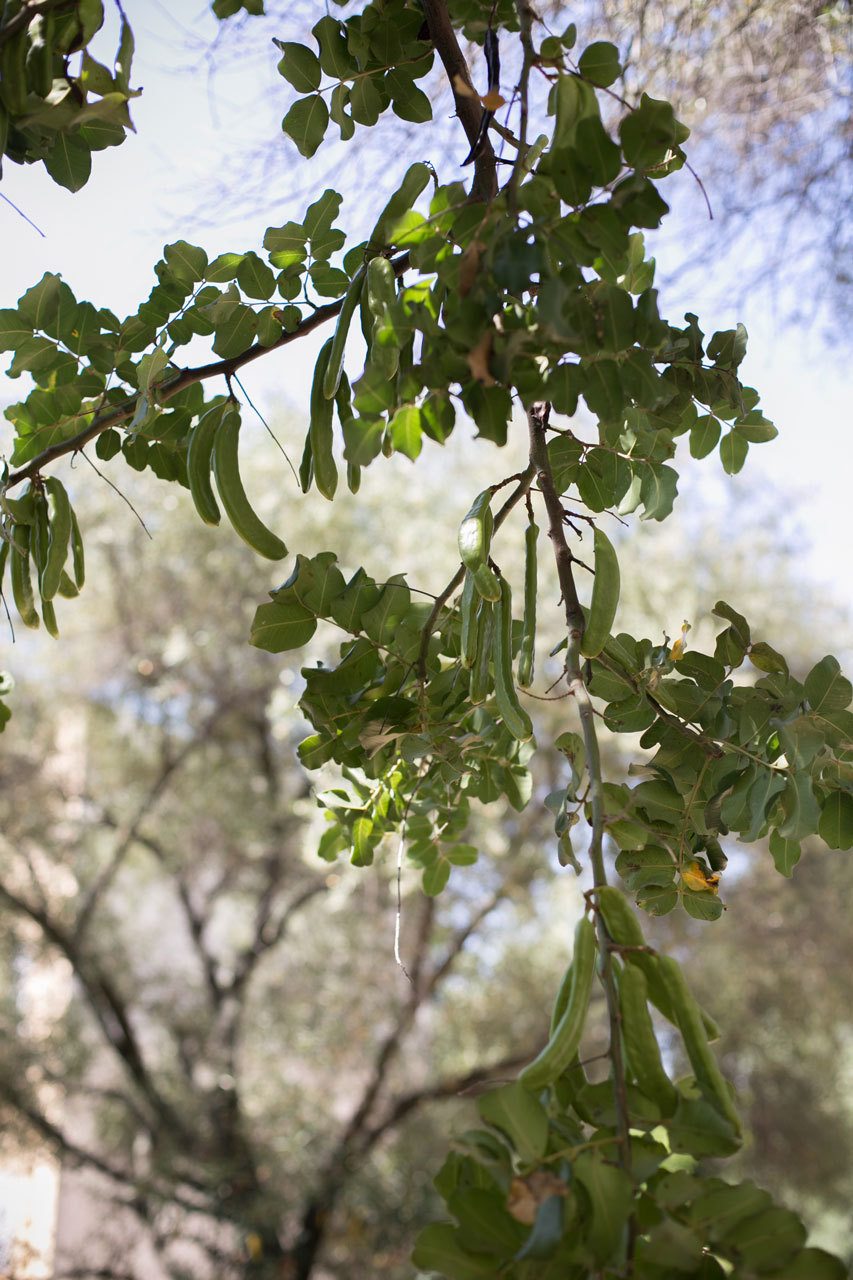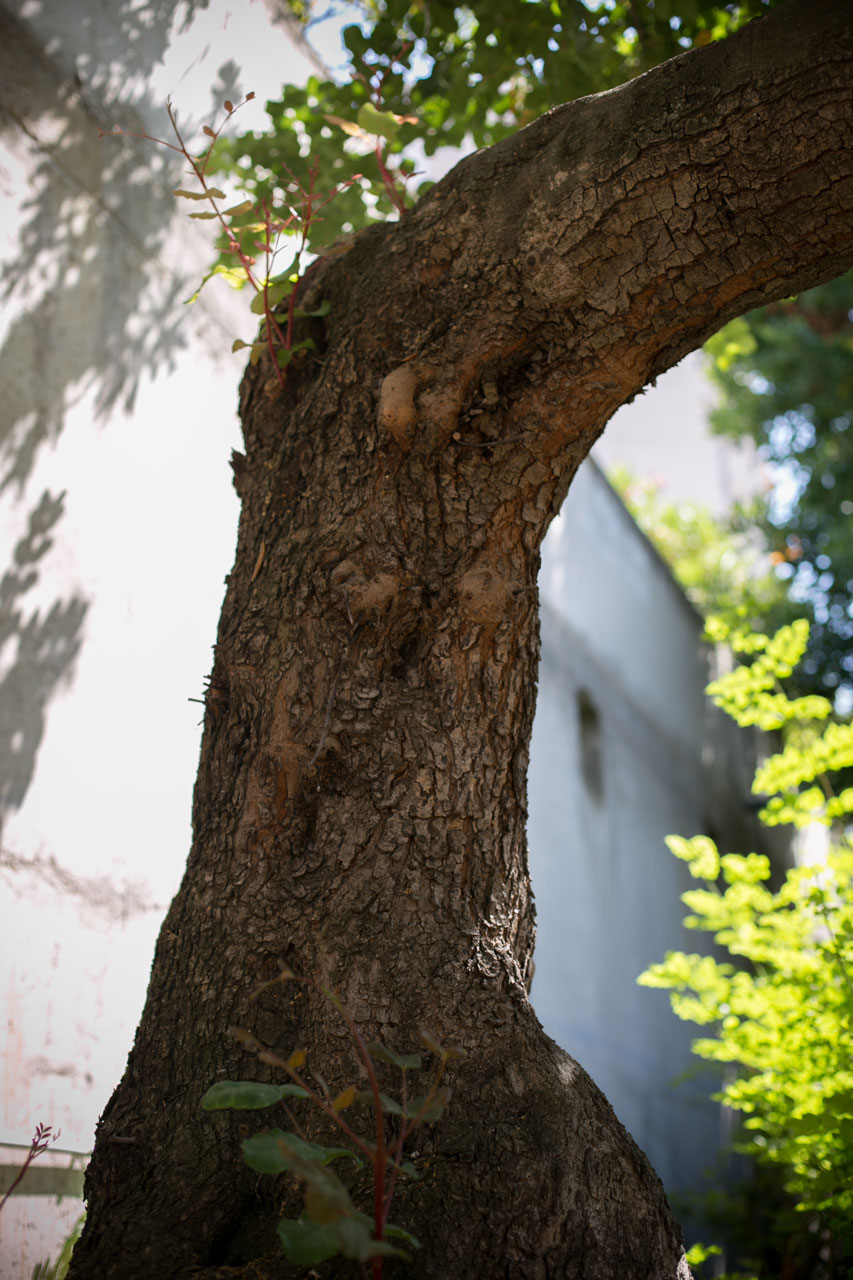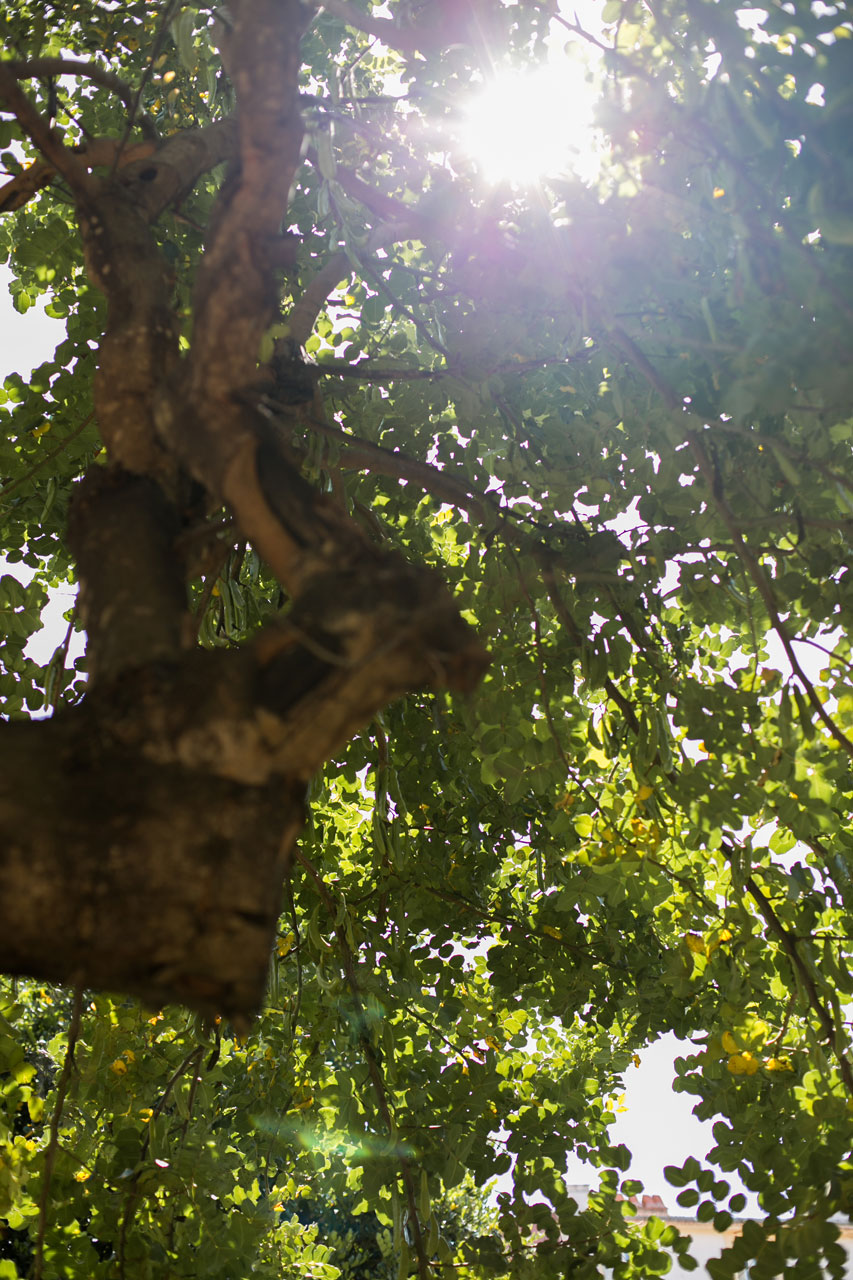
Caro tree
Ceratonia siliqua
Son nom « Ceratonia siliqua» vient du grec ‘Kéros’ qui désigne la corne faisant référence à l’extrême durété des graines. Le mot ‘siliqua’ signifie silique, cosse.
- Common name: Caro tree, Locust tree, Saint John’s bread
- Corsican name: Carrubbu
- French name: Carouge, Fève de Phytagore, Figuier d’Egypte, Pain de Saint Jean-Baptiste
Notes
A dioecious species, so you have to have a male specimen and a female specimen to get the fruit, which is called a locust bean.
Species characteristics
Family: Fabaceae
Origin: Asia Minor
Habitat: Rocky and arid areas, wood edges
Characteristics: Shrub with tough evergreen foliage. The scent of the nectar-bearing flowers is not always appreciated. The locust beans appear a year after flowering, hanging, indehiscent, containing about fifteen edible, fleshy, fatty and sweet seeds.
The Ceratonia can reach a height of 8 to 12 metres.
Flowering period: Summer to Autumn
Uses and properties: Each seed has a consistent weight of 200 mg. Thus was born the carat, which is used as a unit of measurement for precious stones. The Romans also used it as a unit of measurement. One scruple was equivalent to 6 seeds of the Caro.
Its reddish, exteremely hard wood is sought after for cabinetmaking.
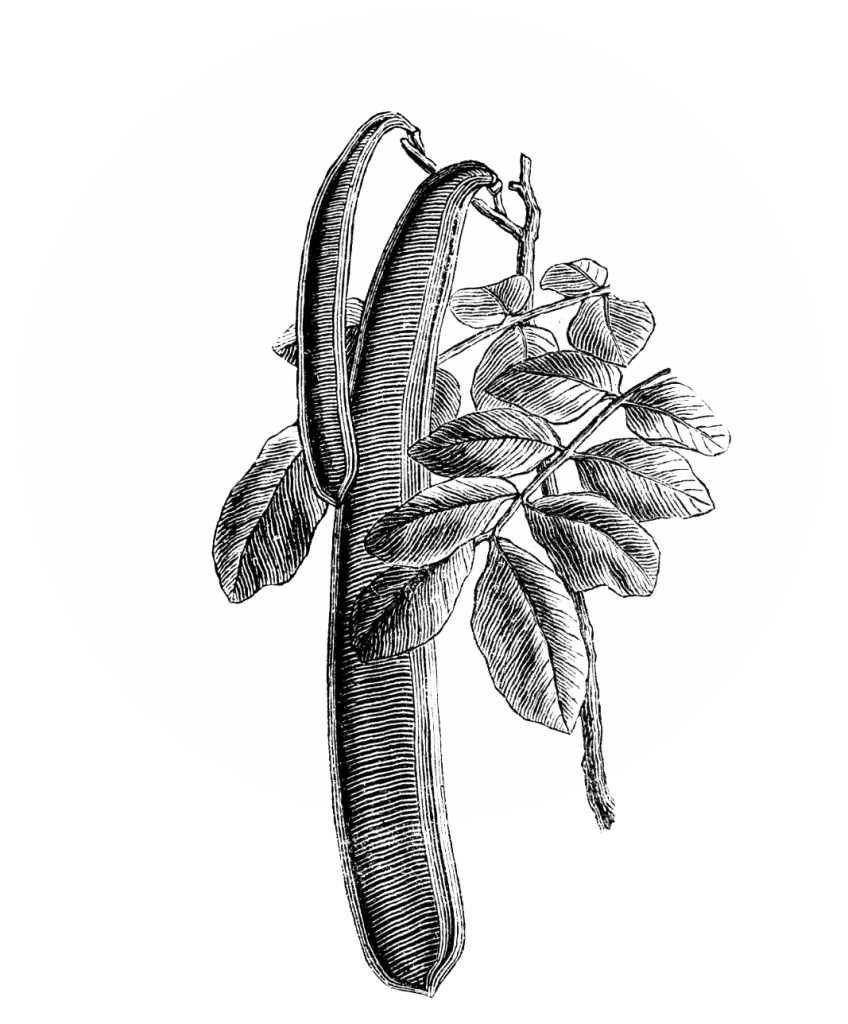
History and oddities
A long-lived shrub, it can live up to 500 years.
In the countries of the Maghreb, locust beans are fermented to produce brandy.

